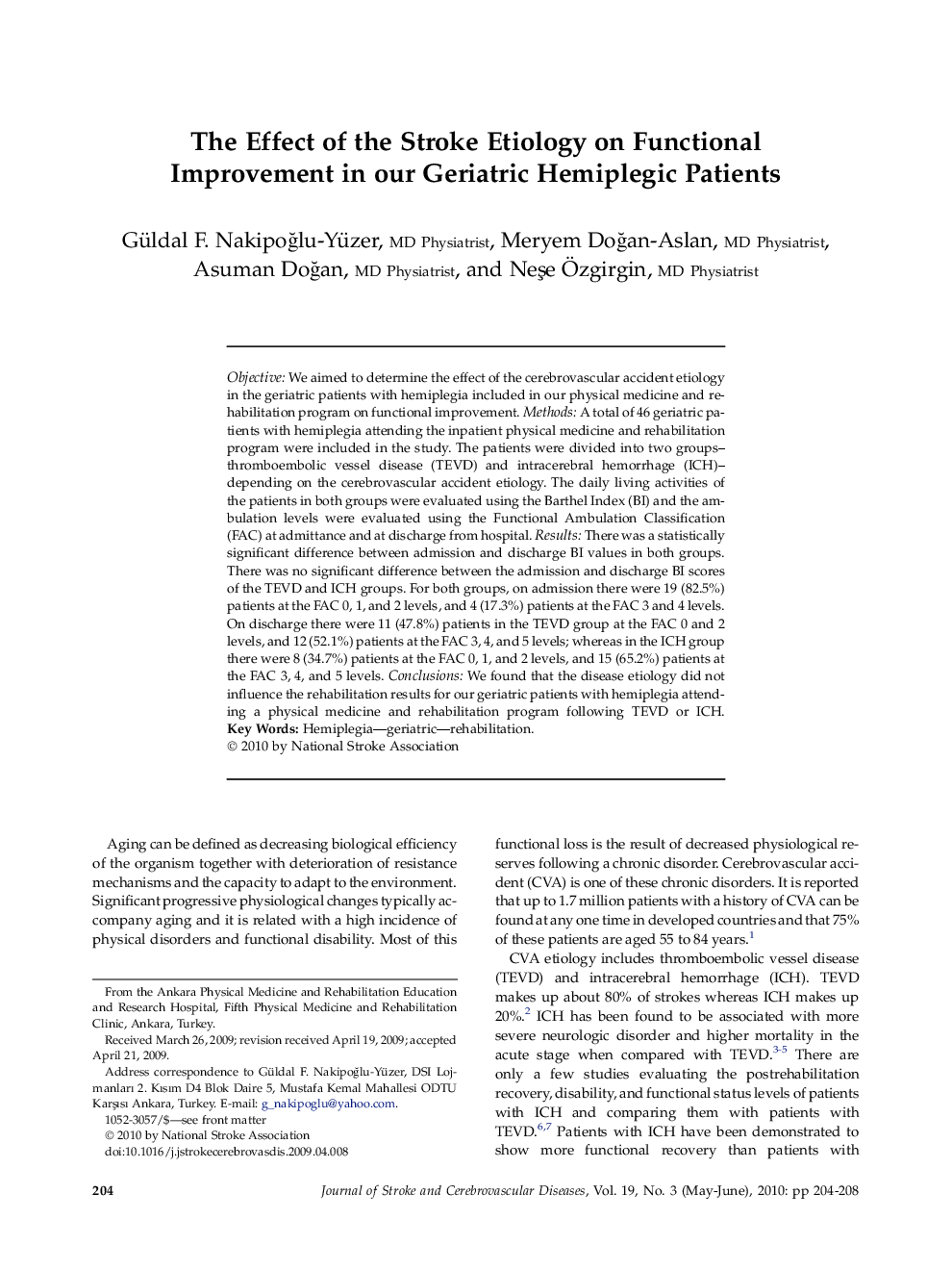| Article ID | Journal | Published Year | Pages | File Type |
|---|---|---|---|---|
| 2704598 | Journal of Stroke and Cerebrovascular Diseases | 2010 | 5 Pages |
ObjectiveWe aimed to determine the effect of the cerebrovascular accident etiology in the geriatric patients with hemiplegia included in our physical medicine and rehabilitation program on functional improvement.MethodsA total of 46 geriatric patients with hemiplegia attending the inpatient physical medicine and rehabilitation program were included in the study. The patients were divided into two groups–thromboembolic vessel disease (TEVD) and intracerebral hemorrhage (ICH)–depending on the cerebrovascular accident etiology. The daily living activities of the patients in both groups were evaluated using the Barthel Index (BI) and the ambulation levels were evaluated using the Functional Ambulation Classification (FAC) at admittance and at discharge from hospital.ResultsThere was a statistically significant difference between admission and discharge BI values in both groups. There was no significant difference between the admission and discharge BI scores of the TEVD and ICH groups. For both groups, on admission there were 19 (82.5%) patients at the FAC 0, 1, and 2 levels, and 4 (17.3%) patients at the FAC 3 and 4 levels. On discharge there were 11 (47.8%) patients in the TEVD group at the FAC 0 and 2 levels, and 12 (52.1%) patients at the FAC 3, 4, and 5 levels; whereas in the ICH group there were 8 (34.7%) patients at the FAC 0, 1, and 2 levels, and 15 (65.2%) patients at the FAC 3, 4, and 5 levels.ConclusionsWe found that the disease etiology did not influence the rehabilitation results for our geriatric patients with hemiplegia attending a physical medicine and rehabilitation program following TEVD or ICH.
